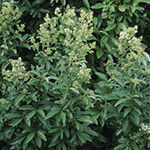
Troublesome Plant – European privet
(Ligustrum vulgare)
1. ‘Conoy’ Burkwood Viburnum
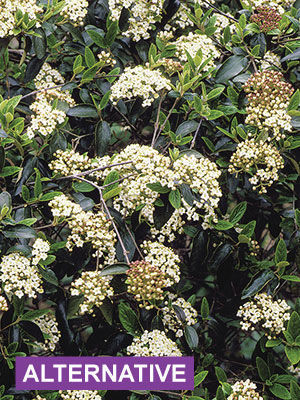
Name: Viburnum × burkwoodii ‘Conoy’
USDA hardiness zones: 5 to 8
Size: 4 to 5 feet tall and 7 to 8 feet wide
Conditions: Full sun to partial shade; moist, well-drained soil
‘Conoy’ burkwood viburnum is a compact introduction from the United States National Arboretum and a superior alternative to the aggressive, invasive, yet ubiquitous European privet. This multistemmed, spreading shrub has small, lustrous, dark green leaves, which turn deep maroon during cold months; in warmer zones, the fine-textured foliage is reliably evergreen. In late spring, ‘Conoy’ comes alive with showy, creamy white flowers, which have a slight fragrance. The flowers give rise to red fruit by late summer and persist on the shrub into autumn. It is an ideal plant to use singly, massed in a border, along a foundation, or in an informal hedge.
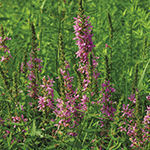
Troublesome Plant – Purple loosestrife
(Lythrum salicaria)
2. ‘Apollo’ Culver’s Root
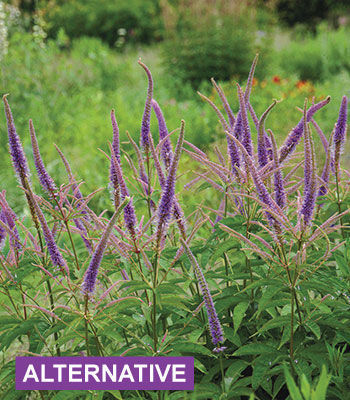
Name: Veronicastrum virginicum ‘Apollo’
Zones: 4 to 8
Size: 4 to 5 feet tall and 2 to 3 feet wide
Conditions: Full sun to partial shade; moist, well-drained, rich soil
Stately ‘Apollo’ Culver’s root has a similar vertical habit to purple loosestrife but without the latter’s invasive nature. It can be placed in the back of a border or throughout the garden to add a dramatic accent. Lance-shaped, dark green leaves are whorled around the stems in rosettes. Its coarse leaves contrast well with grasses and other fine-textured plants. From early to late summer, elegant branching spires of lilac flowers rise above the foliage. The flowers are inviting to pollinators and hummingbirds, and they are also great for cutting.
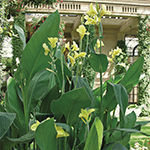
Troublesome Plant – Cannas
(Canna spp. and cvs.)
3. False Hellebore
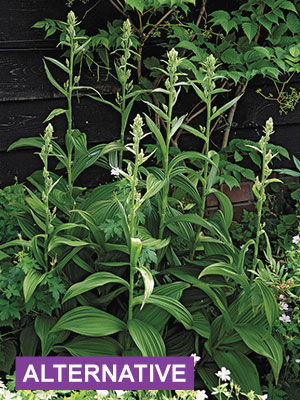
Name: Veratrum californicum
Zones: 5 to 9
Size: 6 feet tall and 2 feet wide
Conditions: Full sun to partial shade; fertile, moist soil
For a tropical look without the overwintering hassle of cannas, try false hellebore, an impressive and long-lived perennial that forms large clumps. In late summer to early fall, the thick stems of this plant rise above the distinct, corrugated, bright green foliage to support a candelabra-like inflorescence of creamy white flowers. Don’t cut it back in fall as the seed heads provide good winter interest. It is slow to flower (five years from seed), but it’s worth the wait. This plant is resistant to deer and rodents due to its toxicity, but it should be kept away from grazing pets.
Adam Woodruff is the principal designer at Adam Woodruff and Associates, a landscape-design firm in St. Louis, Missouri.
Photos, except where noted: #1 (troublesome), Bill Johnson; #1 (alternative), Jerry Pavia; #2 (troublesome), Jennifer Benner; #3 (troublesome), Michelle Gervais; #2 (alternative) and #3 (alternative), courtesy of Adam Woodruff;


















Comments
Log in or create an account to post a comment.
Sign up Log in